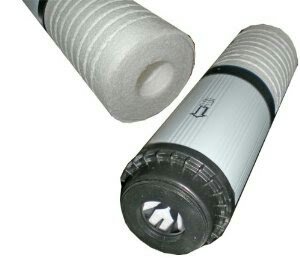Good day guys and girls.
We have a debate and I want third party advice.
The advice from this group will make my final decision!
I acuired a secondhand R.O. D.I. system a week ago.
I'm replacing filters etc.
The debate is currently on the 3 stages infront of the R.O. membrane. Currently theres the 1 micron sediment filter, then the granulated activated carbon and then the block carbon.
With this setup I had an initial TDS of 540 and a final TDS of 20.
Some of the water in Windhoek Namibia is recycled (Yes we drink our own...... you know...... ) so its not the purest of water therefore the high TDS and we have a lot of chlorine etc. in the water. There tends to be a high amount of actual sediment in our water as well.
Another source said I should rather use a 5 micron sediment filter, then the 1 micron and then the carbon block.
Do I stay with the current configuration of, 1 micron - granulated activated carbon - block carbon or opt for the 5 micron - 1 micron - carbon block, configuration?
We have a debate and I want third party advice.
The advice from this group will make my final decision!
I acuired a secondhand R.O. D.I. system a week ago.
I'm replacing filters etc.
The debate is currently on the 3 stages infront of the R.O. membrane. Currently theres the 1 micron sediment filter, then the granulated activated carbon and then the block carbon.
With this setup I had an initial TDS of 540 and a final TDS of 20.
Some of the water in Windhoek Namibia is recycled (Yes we drink our own...... you know...... ) so its not the purest of water therefore the high TDS and we have a lot of chlorine etc. in the water. There tends to be a high amount of actual sediment in our water as well.
Another source said I should rather use a 5 micron sediment filter, then the 1 micron and then the carbon block.
Do I stay with the current configuration of, 1 micron - granulated activated carbon - block carbon or opt for the 5 micron - 1 micron - carbon block, configuration?

 0tds
0tds